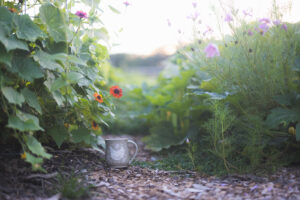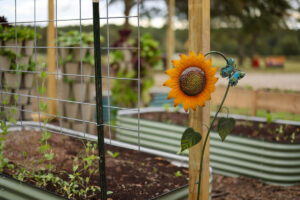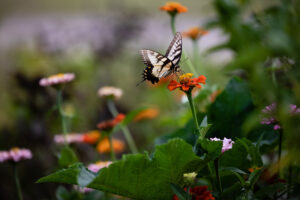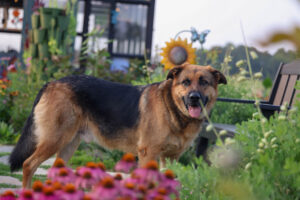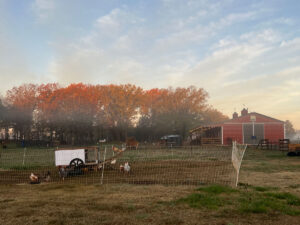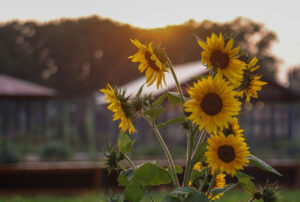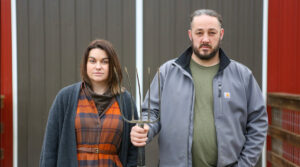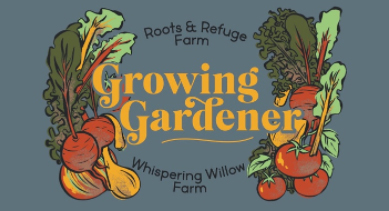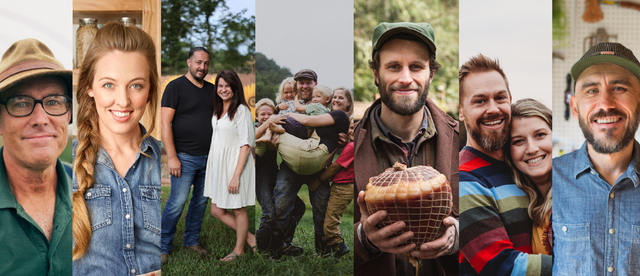To keep seedlings from getting too crowded, it's necessary to separate seedlings and either pot them up or thin them to allow for proper growth of your plants. In this post, I'm telling you how.
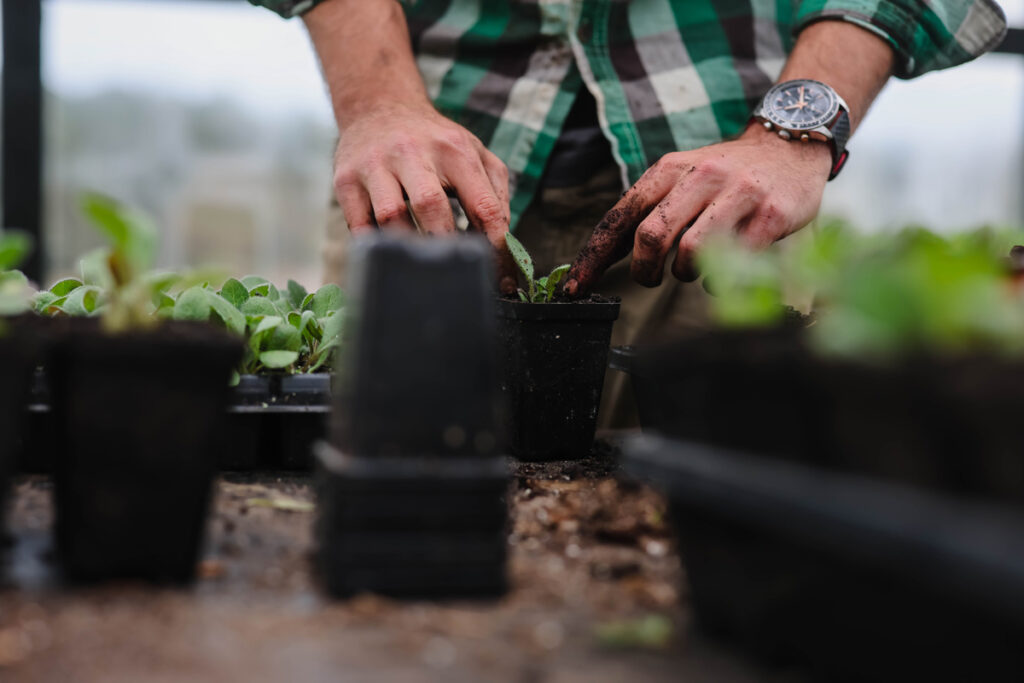
After you have read about my seed shopping method and where to buy heirloom seeds, you’ve probably learned the advantages of starting seeds indoors, and decided to learn how to start seeds indoors yourself.
Now that you have those beet, carrot, corn, pepper, or tomato seedlings coming up, you may notice they are beginning to crowd each other.
You may need to separate them and replant (or pot them up) before you transplant seedlings elsewhere. Follow along as I show you step by step how to separate seedlings.
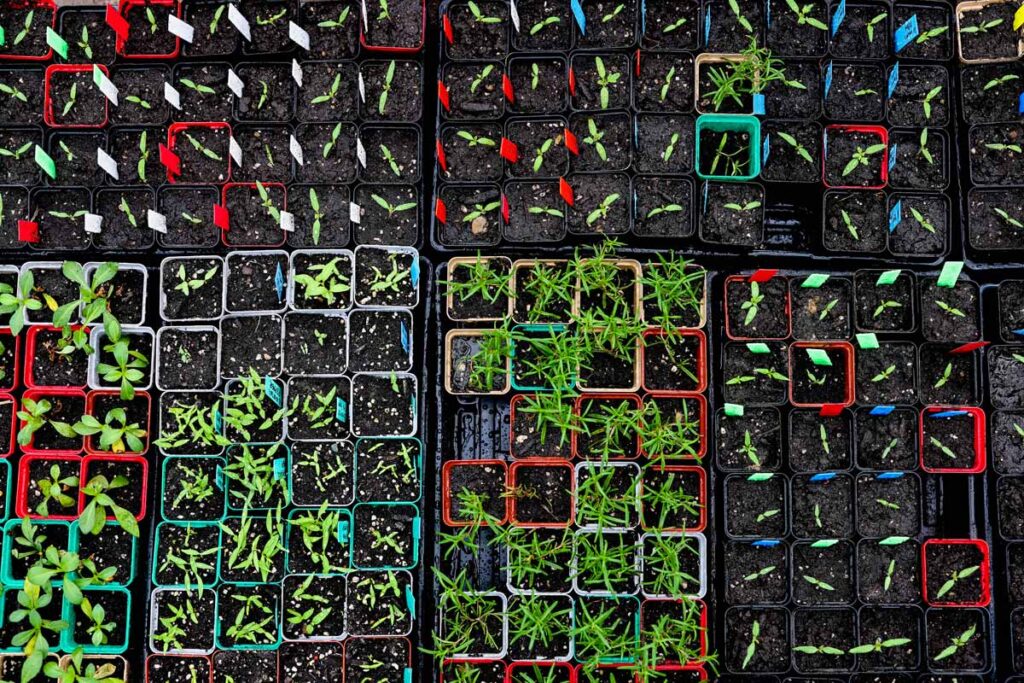
Why You Should Separate Seedlings
Common practice is to sow more than one seed at a time in case a single seed does not germinate in that space. When you sow seeds in a single pot, they will sprout very close to each other and you’ll have crowded seedlings.
Seedlings will grow faster and larger when they have more space to stretch their roots. If you don’t separate and thin your seedlings, they will become stunted and will not produce well.
This happens because the seedlings are competing with each other for root space, water, nutrients, and air.
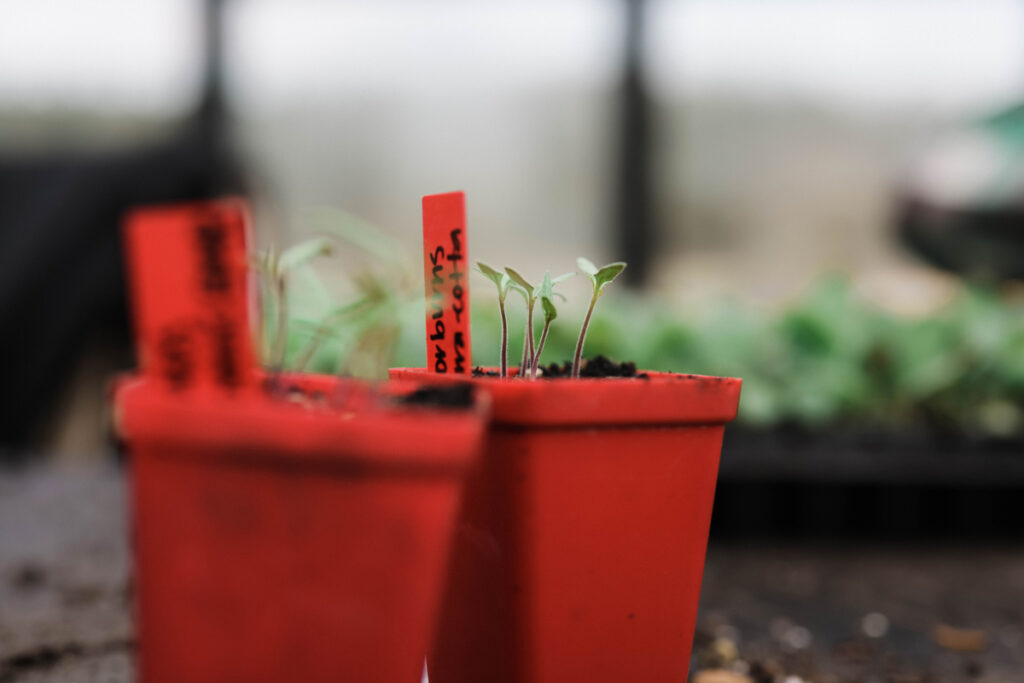
When You Should Separate Seedlings
Seedlings should be separated and replanted into individual pots after they have received their first sets of true leaves.
The cotyledon (or first set of leaves) forms once the seeds germinate. The cotyledon leaves help the plant to sprout by breaking open the seed coat. Cotyledon leaves are important for providing nutrients to the plant but aren't the plant's first true set of leaves.
Once you see the second set of leaves or the first “true” leaves, then it’s time to separate and plant the seedlings into larger individual pots.
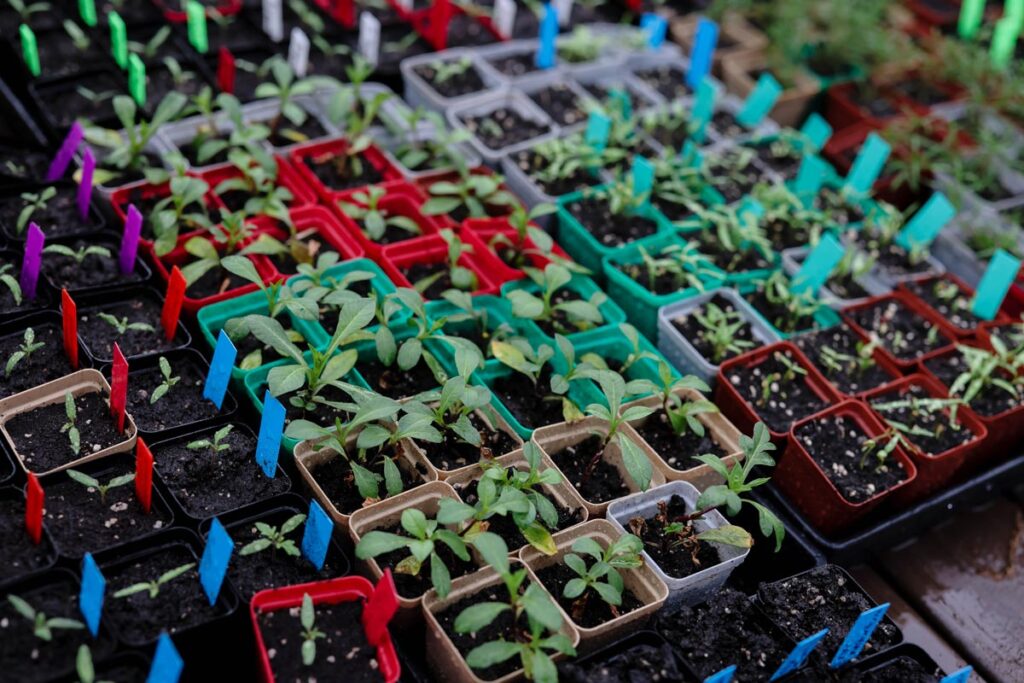
Supplies Needed
- Containers – Your seedlings can be transplanted to almost any kind of larger pot as long as it has some drainage holes and enough soil for the roots of your seedlings to stretch out in. Here are some fun and inexpensive garden bed ideas for transplanting your seedlings. Or click here to get my favorite Green-Stalk planters (using coupon code “ROOTS10” to get $10 off.) Pro-Tip: It’s important to keep your separated seedlings indoors until the nightly temps stay above 50 degrees.
- Soil – Have plenty of soil on hand to pack around those tender seedlings when you move them to their own containers. Potting mix is the easiest to use but if you’re using your own soil, be sure it contains fertilizer. I like to use this fish emulsion fertilizer to give those seedlings a boost of nutrients.
- Seedlings – This process works for any crowded vegetable or flower seedlings.
- Markers – It’s important to write out your markers when separating and replanting your seedlings. Many plants look alike at this stage and you don’t want to confuse them. I love using these durable plant markers that come in five colors.
- Water – Anytime you transplant, separate, or pot up seedlings it's important to give them a nice healthy drink of water. Pro Tip: A spray bottle or small water bottle can help control the water flow to prevent drowning delicate seedlings.
How to Separate Seedlings
Remember to start with seedlings that have their second set of leaves and are mature enough to be separated.
- If you have the room, use your finger or a fork to remove the seedling. Make sure to go deep enough to get all the roots, and carefully pull the seedling out of the pot.
- If your seedlings are planted very close together (like the ones you buy at the store) and you can’t pull a single one out, give the pot a squeeze to loosen the soil and carefully dump out the whole pot. Pro-Tip: When purchasing seedlings from the grocery store, look for the ones with extra seedlings in the container. This can double the value of your purchase!
- If your seedling’s roots are tightly wound around each other, you should gently pull them apart to prevent having the roots disturbed. Your seedlings don’t have to have every root in their root system but you want them to have as much as possible. If the roots are very tightly wound together and you can't separate them without tearing the roots, gently rinse the soil from the roots and they will come apart easily.
- In a new container with moist potting soil, poke a hole for the seedling deep enough that the roots can be stretched out, and then put your seedling in. Gently pack the soil around your seedling.
- Add enough soil so that your seedling stands securely without drooping.
- Give your potted-up seedlings a good watering so that the water goes all the way down to the roots.
- Label and put a marker in your plant so that you know what it is.
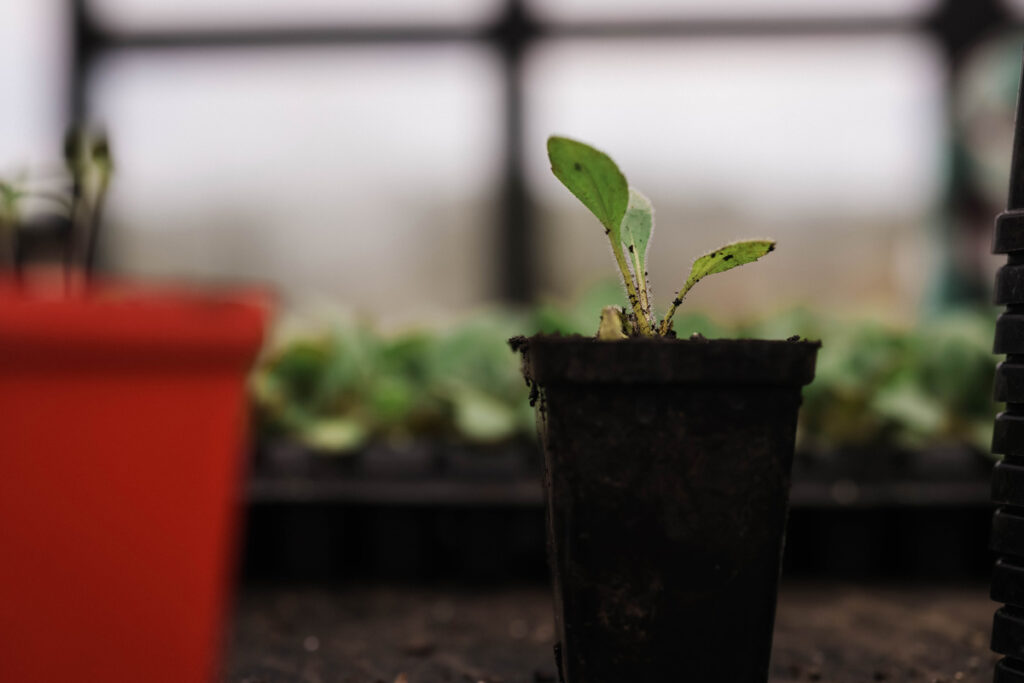
Tips When Separating Seedlings
- Pot tomato plants deep. If touching the ground, any part of the seedling stem will grow roots. You can plant tomato seedlings right up to the leaves. This also helps tomatoes to have a more extensive root system which helps them to soak up water and nutrients.
- To keep your seedling transplants from going into transplant shock, be sure to keep the roots damp and keep your seedlings out of direct sunlight for a couple of days.
More Gardening Tips
- Where to Buy Heirloom Seeds
- How to Start a Compost Pile
- Planting Seedlings Indoors-Advantages To Know
- Starting Seeds Indoors in 6 Easy Steps (+Tips for Success)
- How to Plant Carrot Seeds (For Best Germination Rate)
- Growing in Soil Bags-Container Gardening Made Easy
- A Complete Guide to Vertical Gardening (On a Budget!)
- How to Build a Garden Arch Trellis or Garden Arbor (for $30!)

